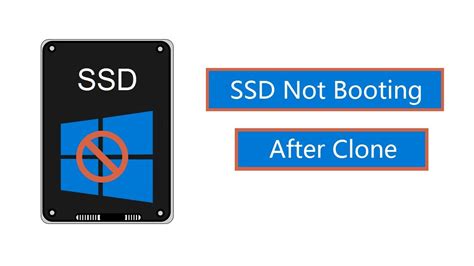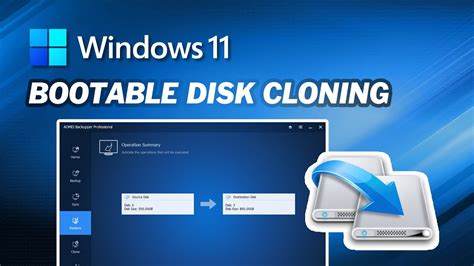clone ssd does not boot | cloned hard drive won't boot clone ssd does not boot I used acronis true image that came with my kingston a2000 nvme drive. I used it to . VIP. select tickets. what's included. Passes. 2024 Merch Collection. Lineup. Experience. Travel. Sponsors. Buy tickets to the festival, get camping info, learn all about EDC Las Vegas, and explore the world of Electric Daisy Carnival—the music, the rides, and the art.
0 · ssd not booting after cloning
1 · make ssd bootable after cloning
2 · make disk bootable after clone
3 · computer won't boot from ssd
4 · cloned hard drive won't boot
5 · cannot boot from cloned disk
6 · aomei cloned disk won't boot
7 · acronis cloned disk not bootable
As attendees make their way to and from the event each day, heavy traffic can be expected, mainly on Interstate 15, U.S. Highway 95 and Las Vegas Boulevard. The heaviest traffic heading to the .Buy tickets to the festival, get camping info, learn all about EDC Las Vegas, and explore the world of Electric Daisy Carnival—the music, the rides, and the art.
hi, quick question - I'm cloning a SATA SSD to a PCIe M.2 NVME SSD (Gen 4). the SATA SSD boots in the new computer no issues. but the M.2 throws up errors & wont boot. now I didnt.

Clean SSD and redo cloning. Use Macrium Reflect instead. Should be much faster, .I used acronis true image that came with my kingston a2000 nvme drive. I used it to .
Clean SSD and redo cloning. Use Macrium Reflect instead. Should be much faster, when not using USB. Note - this is important. After cloning is done - for first boot from cloned .
It is recommended to put the new drive in the laptop first, and connect the old drive via USB. Otherwise you will may not be able to boot from the new cloned drive, as Acronis True Image will apply a bootability fix to the new disk and adjust the boot settings of the target drive to boot from USB. If the new disk is inside the laptop, the boot . Next, rebuild BCD, type: bcdboot D:\Windows /s Z: /f UEFI. mountvol Z: /D. Next, access your BIOS, change boot priority for the SSD and set the boot mode to UEFI or In some BIOS, disable CSM. then reboot. NOTE: To avoid typing error, just copy and paste the commands to the Admin command prompt windows. Exit Macrium. If your Windows was installed using MBR, Open disk management and make sure the SSD is marked "Active" else go to next step. Shutdown your PC. Disconnect the HD containing Windows C drive then connect your SSD to it. Reboot. Your PC should boot and the Windows should have C as the drive letter.
The computer is booting from the new 4T SSD as you can see on the Disk Manager you posted. C: is the partition with Windows and it is on the 4T SSD. What is Disk 0 (PCIe or M.2)? Install the new 4T SSD on the M.2 Remove the old SSD from the PCIe Enter BIOS and make sure the 4T SSD on the M.2 is the first boot option. Does it boot? Use partition master, assign an available drive letter, for example: "S" to the EFI partition on disk 1 (your SSD) then open the Admin command prompt then type: bcdboot F:\windows /s S: /f UEFI. This will rebuild the BCD in disk 1 with correct info to boot Windows from F. Once done, remove the letter. Reboot. So return the original drive the HDD to the computer - take out the cloned SSD. make the USB WinPE rescue install. Take out the HDD - replace the coned SSD in the same SATA port. Boot from the rescue environment and follow the procedure to repair the boot. The most likely cause is the problem of the boot files.
System boots, either with the old drive in the m.2 slot or not. Either configuration allows access to all files. With large disk in m.2,, whether or not the small disk is in PCIe, BSOD without capability to go into any of the recovery options. Also, using either disk on PCIe will boot even though BIOS does not recognize either disk . I had this same issue with EaseusToDo. After some research I bought a copy of WinToUSB and it worked flawlessly. I cloned my existing Win 10 internal SSD and all files to an external Sandisk Extreme Pro SSD. WintoUSB was only 20 bucks after a discount code was applied. It worked great and boots up as fast as my internal SSD. After the clone, I installed the SSD and attempted to boot. (without the HDD hooked up). Windows 10 appears like its booting, but after 35 seconds at the boot screen, the system reboots and I get this screen: I tried the following, but the same problem occurs: Cloned the HDD from the Laptop with secure boot off and on different hardware. I ran the disk clone again and this is the result. Disk 0 (MBR) was cloned to disk 2 The 857MB recovery partition appears on the new boot ssd as just a 863MB primary partition. The other partitions are ok and when disk 2 is the boot drive .
It is recommended to put the new drive in the laptop first, and connect the old drive via USB. Otherwise you will may not be able to boot from the new cloned drive, as Acronis True Image will apply a bootability fix to the new disk and adjust the boot settings of the target drive to boot from USB. If the new disk is inside the laptop, the boot . Next, rebuild BCD, type: bcdboot D:\Windows /s Z: /f UEFI. mountvol Z: /D. Next, access your BIOS, change boot priority for the SSD and set the boot mode to UEFI or In some BIOS, disable CSM. then reboot. NOTE: To avoid typing error, just copy and paste the commands to the Admin command prompt windows.
ssd not booting after cloning
Exit Macrium. If your Windows was installed using MBR, Open disk management and make sure the SSD is marked "Active" else go to next step. Shutdown your PC. Disconnect the HD containing Windows C drive then connect your SSD to it. Reboot. Your PC should boot and the Windows should have C as the drive letter. The computer is booting from the new 4T SSD as you can see on the Disk Manager you posted. C: is the partition with Windows and it is on the 4T SSD. What is Disk 0 (PCIe or M.2)? Install the new 4T SSD on the M.2 Remove the old SSD from the PCIe Enter BIOS and make sure the 4T SSD on the M.2 is the first boot option. Does it boot? Use partition master, assign an available drive letter, for example: "S" to the EFI partition on disk 1 (your SSD) then open the Admin command prompt then type: bcdboot F:\windows /s S: /f UEFI. This will rebuild the BCD in disk 1 with correct info to boot Windows from F. Once done, remove the letter. Reboot. So return the original drive the HDD to the computer - take out the cloned SSD. make the USB WinPE rescue install. Take out the HDD - replace the coned SSD in the same SATA port. Boot from the rescue environment and follow the procedure to repair the boot. The most likely cause is the problem of the boot files.
brand new rolex prices singapore
System boots, either with the old drive in the m.2 slot or not. Either configuration allows access to all files. With large disk in m.2,, whether or not the small disk is in PCIe, BSOD without capability to go into any of the recovery options. Also, using either disk on PCIe will boot even though BIOS does not recognize either disk . I had this same issue with EaseusToDo. After some research I bought a copy of WinToUSB and it worked flawlessly. I cloned my existing Win 10 internal SSD and all files to an external Sandisk Extreme Pro SSD. WintoUSB was only 20 bucks after a discount code was applied. It worked great and boots up as fast as my internal SSD.
After the clone, I installed the SSD and attempted to boot. (without the HDD hooked up). Windows 10 appears like its booting, but after 35 seconds at the boot screen, the system reboots and I get this screen: I tried the following, but the same problem occurs: Cloned the HDD from the Laptop with secure boot off and on different hardware.
entry price rolex
make ssd bootable after cloning

make disk bootable after clone

The EBWXS1-SUB-LV wireless mesh expansion module adds one (1) additional sensor to an existing Eyedro business wireless electricity monitor . Simply connect the expansion module and it will automatically join the mesh network . See your electricity usage in real-time; Easy and non-invasive installation; Free monitoring via MyEyedro.com
clone ssd does not boot|cloned hard drive won't boot


























